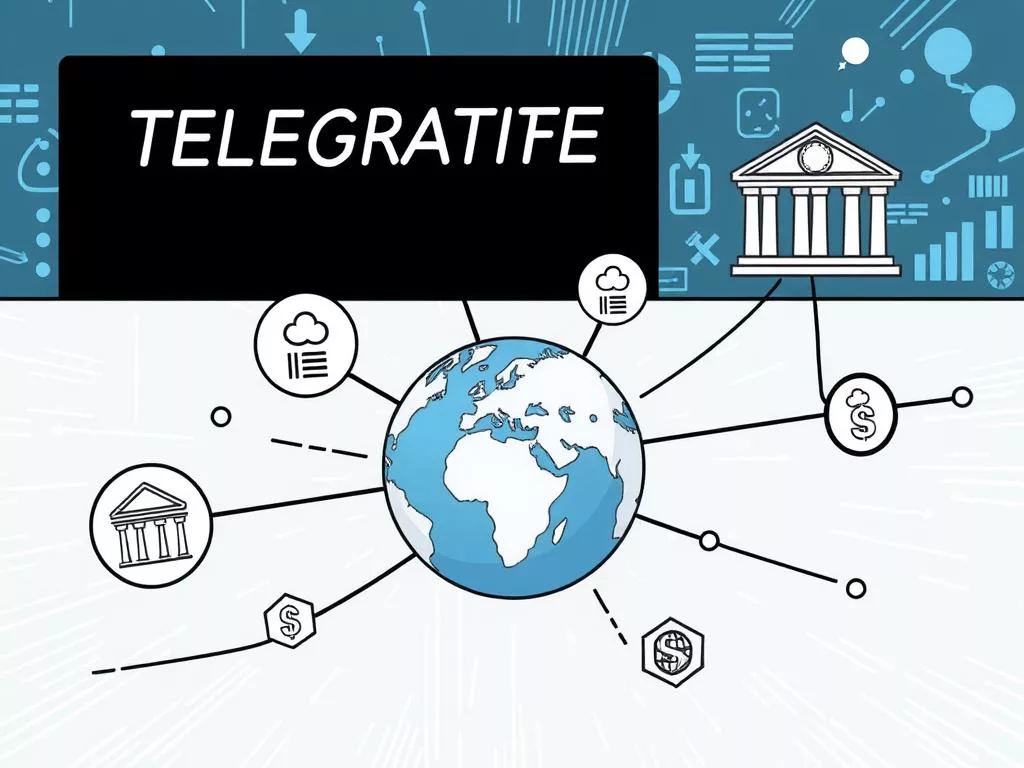Telegraphic transfers help move money across the world. They are also known as international bank transfers, electronic funds transfer, or SWIFT payments. These methods are key for big transactions by businesses and individuals.
These transfers are for big needs, like paying overseas suppliers or investing globally. Knowing how they work and their costs is important. The fees can be from USD 10 to USD 50, based on the banks and currencies. They usually take 1-5 business days to arrive.
To start a transfer, you need the recipient’s full name, bank account number, and SWIFT/BIC code. They are reliable, making them a top choice for international trade and big investments. Knowing about telegraphic transfers is vital for safe and efficient money moves in today’s world.
For more on secure large bank transfers, check out our full guide here.
What is a Telegraphic Transfer?
A Telegraphic Transfer (TT) is a way to send money across banks, mainly for international deals. It’s also known as a wire transfer in the U.S. This method is fast and safe for big money moves. It uses the SWIFT network, a global messaging system for financial info.

Sending money with a TT involves complex steps through many banks. This ensures smooth handling of the money. Today, TTs are faster and safer than old methods, thanks to digital tech.
The term “telegraphic transfer” varies by region. In the U.S., it’s called a wire transfer. In Europe, it’s known as a SWIFT payment. But the core idea is the same: a trusted service for big transactions around the world.
| Bank | Outgoing Domestic TT Fee | Outgoing Foreign TT Fee (USD) | Outgoing Foreign TT Fee (Foreign Currency) | Incoming TT Fee |
|---|---|---|---|---|
| Bank of America | $30 | $45 | $0 | $15 |
| Wells Fargo | $25 | $25 | $0 | $15 |
| Chase | $25 online, $35 by phone/in-branch | $40 | $5 online, $50 by phone/in-branch | $15 |
TTs usually take 2 to 4 business days to finish. They’re great for big and urgent international money moves. The costs include bank fees and others. These transactions help businesses move big amounts of money across borders.
How Do Telegraphic Transfers Work?
Telegraphic transfers are a secure way to send money. To start, you need to give the recipient’s bank details and codes. The sender’s bank then sends a secure message to the recipient’s bank through the SWIFT network.

International transactions have many security steps. These steps protect your money and personal info. Banks also charge extra fees when converting currencies.
Here’s what happens in a telegraphic transfer:
- Initiating TT: The sender gives all the needed info, like the recipient’s bank details and how much to send.
- Secure Messaging: The sender’s bank uses the SWIFT system to send a secure message to the recipient’s bank.
- Processing: The recipient’s bank checks the transaction and does security checks.
- Final Transfer: After checks, the money is put into the recipient’s account.
Today, TTs are faster than before. They usually take one to five business days. The time it takes depends on things like time zones and the banks involved.
| Transfer Type | Average Duration | Fee Range |
|---|---|---|
| Domestic Transfers | 1 business day | $15 – $30 |
| International Transfers | 1 – 5 business days | $15 – $40 + currency conversion |
In places like the UK and India, people say “telegraphic transfer.” But everywhere else, it’s called “wire transfer.” Both are safe ways to move big amounts of money between banks.
Guide to Telegraphic Transfers
Telegraphic transfers, or TTs, are a safe way to make international payments. They are key for many business needs.
To use TTs, you need to give the right info about the person you’re paying. This includes their name, bank, account number, and how to reach them. You also need to share your own details.
Many businesses pick TTs for their reliability and ability to track payments. This helps build strong relationships with suppliers worldwide.
It’s important to know the costs of TTs. Fees can be higher than other payment methods. These include bank fees, fees from other banks, and exchange rate margins. Yet, TTs are often chosen for big, urgent payments because they’re secure and fast.
To start a TT, follow these steps:
- Get all the info you need for the recipient and yourself.
- Go to a bank or use online banking to enter the details.
- Double-check the info to avoid mistakes.
- Confirm the transfer and keep records for tracking.
While TTs are vital for many companies, looking into options like Wise or Payset can save money. These services can cut down on fees and offer better exchange rates. They help avoid the high costs and delays that can come with TTs.
The table below shows the main differences between TTs and fintech services like Wise or Payset:
| Feature | Telegraphic Transfers | Fintech Alternatives (e.g., Wise, Payset) |
|---|---|---|
| Transaction Fees | High (typically £20-£40) | Low |
| Processing Time | 1-5 Business Days | Same Day to 2 Business Days |
| Exchange Rates | Bank Rates with Margins | Mid-Market Rates |
| Transparency | Variable | High |
Understanding TTs and fintech options helps businesses make secure international payments well. This way, they can save money and ensure fast payment.
Fees and Duration of Telegraphic Transfers
The cost of telegraphic transfers, or TT fees, changes a lot. It depends on the countries involved, the banks in between, and the money types. Banks in the U.S. like Bank of America, Wells Fargo, and Chase charge $25 to $50 for sending money abroad. Domestic transfers usually cost $25 to $35.
For example, Bank of America charges $45 for sending USD abroad. Receiving money usually costs $15.
The time it takes for TT transfers is usually one to five business days. This time can change based on the transaction’s complexity, the banks involved, and holidays. Delays can also happen because of paperwork mistakes.
With high TT fees and long transfer times, looking for other options is smart. Companies like Wise and Currencies Direct offer lower fees and better exchange rates. They help avoid the high costs and delays of traditional banks. For more on wire transfer costs and efficient international transactions, see this guide on the best international bank.

